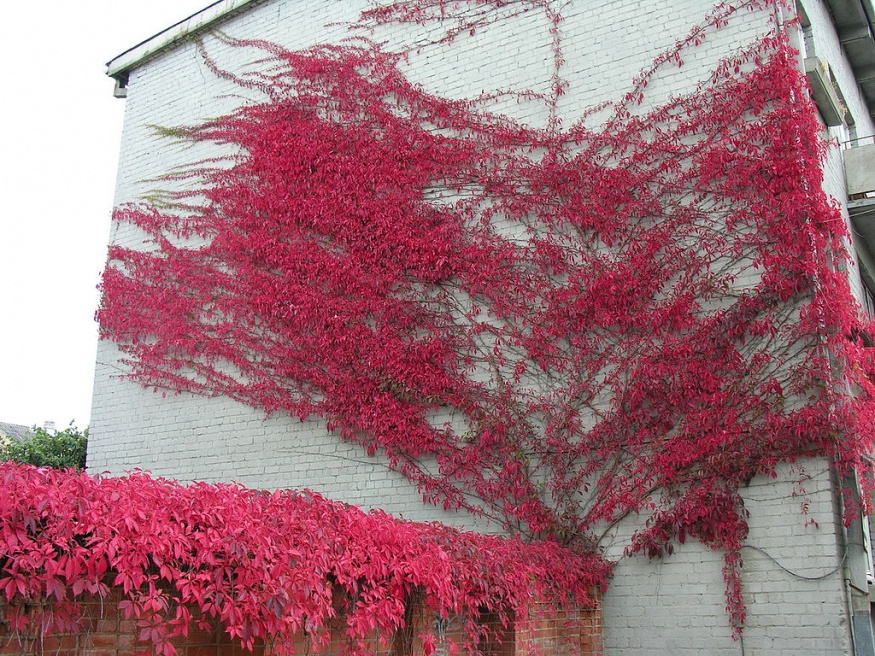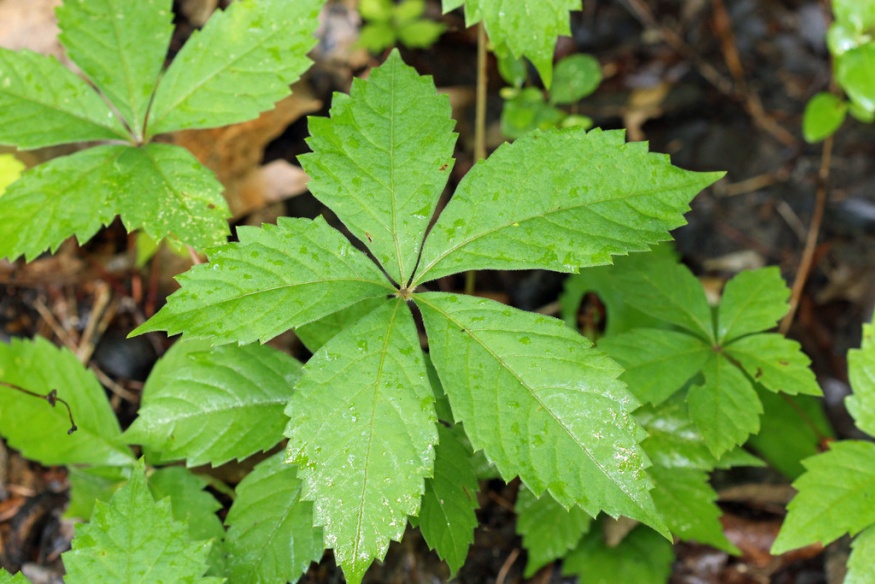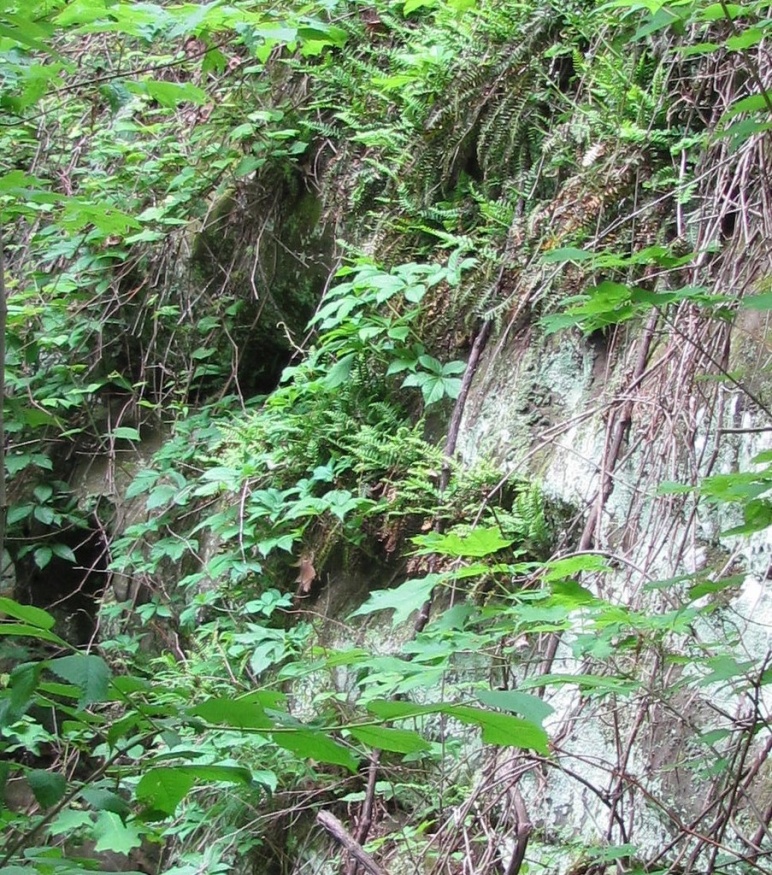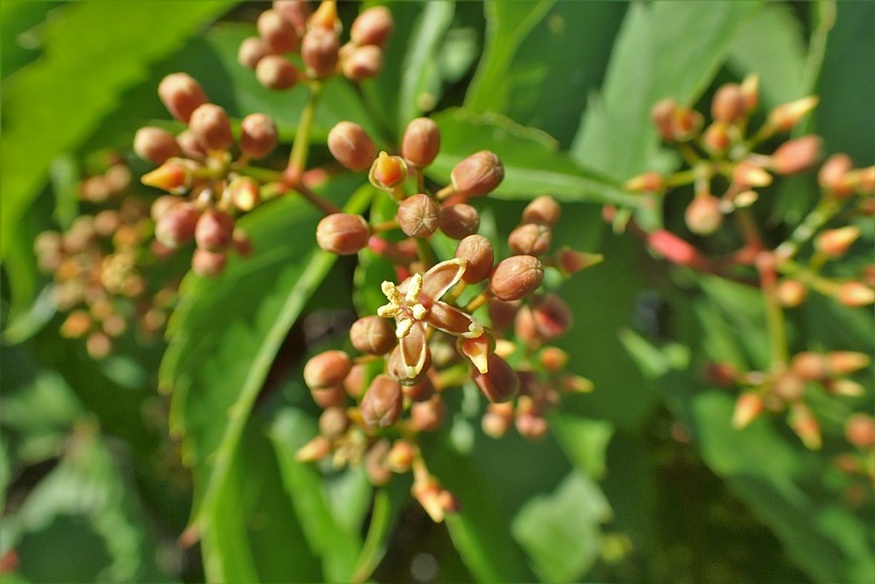Virginia Creeper
 Botanical Name: Parthenocissus quinquefolia
Botanical Name: Parthenocissus quinquefolia Other Names: woodbine
Family: Vitaceae Native to: Eastern North America, Interior North America
Hardy to zone: 3
Eco benefits: attracts pollinators, attracts birds, medicinal
Natural habitat: understory, barren or disturbed ground, inner forests, hillsides & uplands, rocky slopes, forest edge
Shapes: vine
Height: 30-50ft
Growth rate: fast
Unique attractions: fall colour, fruit
Tolerances: salt, air pollution, deer resistant, black walnut, soil compaction
Common uses: landscaping, naturalized plantings, shade garden, ground cover
Insects: scale, leaf hoppers
Diseases: powdery mildew, leaf spot, canker
Light: full sun, partial shade, full shade
Soil: moist and fertile, well drained

Virginia creeper is a vigorous spreading vine In the grape family, native to eastern and central North America. It can be a ground cover or reach up to 50 feet in height when climbing up trees or buildings. At these heights, its woody stems can become several inches thick. The vine Thrives in sun and moisture but is very tolerant of shade as well as drier conditions. It inhabits a variety of locations from woods, valleys, and ravines to rocky bluffs, and hillsides.

Virginia creeper climbs using tendrils with sucker disks at their ends and arial roots which are Bright orange-brown in colour. The leaves are palmately compound with 5 leaflets; shinny above and paler underneath with serrated margins. The vine is often confused with poison ivy which has 3 leaflets. Greenish White flowers appear in late spring to early summer, but are hidden and insignificant. Vibrant dark blue fruit compliment the red to purple or crimson leaf colour in the fall. The very best fall leaf colour occurs when planted in sunny locations.

Virginia creeper provides habitat and shelter for numerous birds, toads and insects. It also attracts bees and other insects with its pollen. The fruit provides food for birds, skunks, chipmunks, and other animals, but is highly poisonous to humans and may be fatal if ingested. The plant has, however, been used medicinally to treat headaches, jaundice, bunions, rheumatism, respiratory problems, and rashes.
In terms of planting, Virginia creeper is well suited as a climbing vine for fences or vertical gardens. Its toleration of pollution, salt, and a variety of conditions make the vine a good choice for urban or naturalized plantings. Care should be taken to ensure the vine has adequate room to spread or receives regular pruning to control growth.
References
Canadian Wildlife Federation. (n.d.). Virginia Creeper. Retrieved from https://cwf-fcf.org/en/resources/encyclopedias/flora/virginia-creeper.html
Missouri Botanical Garden. (n.d.). Parthenocissus quinquefolia. Retrieved from http://www.missouribotanicalgarden.org/PlantFinder/PlantFinderDetails.aspx?kempercode=l490
NC state Extension. (n.d.). Parthenocissus quinquefolia. Retrieved from https://plants.ces.ncsu.edu/plants/parthenocissus-quinquefolia/
Virginia Tech Dendrology. (n.d.). Virginia creeper. Retrieved from http://dendro.cnre.vt.edu/dendrology/syllabus/factsheet.cfm?ID=126